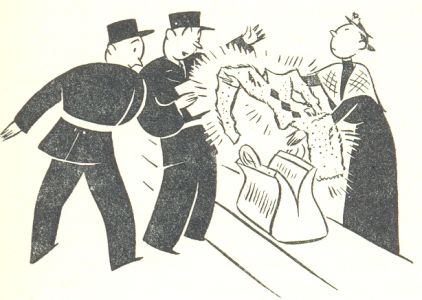| Both Vul. Dealer N |
|
||||||||||||||||||||||||||||||
|
|
|
North. | East. | South. | West. | |||||||||||||||||||||||||
|
- 3 - |
1 3 - |
2 - - |
3 4 |
A DOUBLE NEGATIVE AND A DOUBLE POSITIVE.
It's not often that a spade game is available
on less than half the points when the opposition also have a
game, but this occurred twice when partner and I attended the
Bedfordshire Swiss Teams recently. To begin with, we had to pay
to join the Bedfordshire Bridge Association. We started out
against the favourites, which included a member of the England
squad just returned from a successful foreign expedition.
We defeated them 12-8, and could see people asking who these
strangers were, coming in just to take their prizes. We fluked
the same score in our second match (our first two victims were on
tables one and two in the final round), and seemed on our way.
Then came this board which lost us the third:
| Both Vul. Dealer N |
|
||||||||||||||||||||||||||||||
|
|
|
North. | East. | South. | West. | |||||||||||||||||||||||||
|
- 3 - |
1 3 - |
2 - - |
3 4 |
With both sides vulnerable and North the
dealer, at our table North passed, East opened one club and
sitting South I jumped to two diamonds. Holding a four-card
major, this was wrong. West supported clubs and North supported
diamonds. East then tried bidding three hearts and was raised to
game, making 11 tricks by discarding a spade on the ![]() Q lead.
Q lead.
At the other table, South made a simple overcall of one diamond
and was then able to call two spades over two hearts. North then
jumped to four spades. This contract could go off by leading the ![]() A, then leading the
A, then leading the ![]() 2 (low card to suggest a club entry) for a ruff, back in
with
2 (low card to suggest a club entry) for a ruff, back in
with ![]() K, and another diamond ruff; but not surprisingly this
defence was not found. A double negative score knocked not only
us, but our confidence, as we also lost the next two rounds.
K, and another diamond ruff; but not surprisingly this
defence was not found. A double negative score knocked not only
us, but our confidence, as we also lost the next two rounds.
Too late, we dealt the following board to give us a double
positive score and win our last match:
| Both Vul. Dealer S |
|
||||||||||||||||||||||||||||||
|
|
|
South. | West. | North. | East. | |||||||||||||||||||||||||
|
1 4 - |
3 - - |
3 - - |
3NT X |
I was dealer at South, again, both vulnerable.
Only 10 points, but a nice shapely hand, so I opened one spade.
West, with a nice suit, declared three diamonds and partner
stretched to three spades. East bid three no-trumps, and I
sacrificed in four spades, doubled by East. West led the ![]() A, then switched to the
A, then switched to the ![]() J.
This was allowed to run to my queen, so I crossed to dummy's
J.
This was allowed to run to my queen, so I crossed to dummy's ![]() K
and led a small trump. East rose with his ace and led ace and
another heart. Too late! West was unable to ruff as dummy won and
I drew trumps to claim my doubled contract.
K
and led a small trump. East rose with his ace and led ace and
another heart. Too late! West was unable to ruff as dummy won and
I drew trumps to claim my doubled contract.
Partner and I play a convention which East-West
could have used to their advantage. Like West, we usually lead
ace from ace-King. However if instead we lead the King, when it
holds this tells partner our next card will be a singleton. If
West had done this, East would have gone straight up with his ![]() A
and given his partner a ruff. Then, his
A
and given his partner a ruff. Then, his ![]() A
would be the setting trick.
A
would be the setting trick.
At the other table South passed and West opened three diamonds.
East tried three notrumps for the final contract and collected
the first nine tricks.

Declaring a nice diamond suit.
Cartoon by Eileen McGrath taken from "Joy Weston On Contract Bridge" 1938.